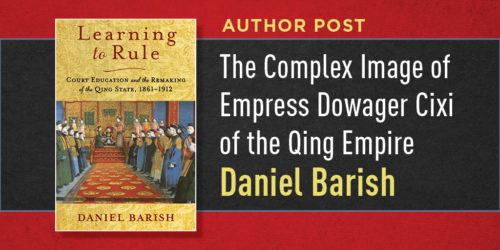Reflections on International Women’s Day and Chinese History Elizabeth LaCouture

On International Women’s Day, March 8, 1942, the author Ding Ling published her “Thoughts on March 8” in the Yan’an Soviet newspaper. She opened with a question: “When will it no longer be necessary to attach special weight to the word ‘woman’ and to raise it specially?” Her answer critiqued the ways “woman” had been used as a symbol while real-life women continued to experience persistent structural sexism. Ding Ling’s remarks were criticized, and her feminism deemed too narrow. Women’s equality was to be achieved through the greater liberation of all people.
There was no separate feminist movement in China after 1949 because the Communist Party gave women their liberation. These are the words that older female intellectuals shared with me when I first visited China in the 1990s. They were worried that because Chinese women did not have to fight for their equality, market economic reforms would unravel the equal status that the CCP had granted them. Unfortunately, their predictions came true. Capitalism has not been kind to Chinese women, but not necessarily for the reasons they suggested. The decline in women’s status exposed the limitations of the theory that female liberation would come about through the people’s liberation. As an ideological construct, however, this framework continues to shape how we think about Chinese women in twentieth-century history and has even informed academic scholarship both inside and outside China. Until the late 1990s, most historians would have described traditional Chinese women as oppressed by feudal families until the Party liberated them in 1949.
I set out to write a different kind of history of Chinese women that highlighted their subjectivities and experiences over the politics and ideology of nation or party.
When I began researching Dwelling in the World, I set out to write a different kind of history of Chinese women that highlighted their subjectivities and experiences over the politics and ideology of nation or party. I began my research looking at Chinese women’s magazines published during the Republican era (1911-1949). There I discovered a world of complexities, contradictions, modern fantasies, and everyday urban life. Magazines included articles on shopping, office work, sex life, and regional politics. I was especially drawn to photographs of rooms—interior spaces perfectly curated with furniture and decorations. The surrounding articles informed readers about how to decorate, clean, and even feel about these new types of rooms and their furnishings. When I saw such depictions of the modern home on the pages of Chinese women’s magazines, I knew these visions were a far cry from the images of the oppressive traditional feudal family depicted in Party ideology, literature, and histories.
As I dug deeper into the sources, I discovered a social-spatial realm of family, house, and home that contradicted the gloomy and oppressive place that had been described by May Fourth male intellectuals like Hu Shi and Lu Xun. I no longer saw Chinese women as Noras yearning to flee their dollhouses. The “home” that I saw on the pages of women’s magazines and in students’ writings was not necessarily an oppressive place that women needed to escape from, but rather one of many urban sites where elite Republican-era women formed their individual identities. Dwelling in the World follows these women from their Western-style villas and Chinese-style courtyard houses where they lived with their multigenerational families, to the schools where they studied, on to the restaurants and parks where they socialized. The book re-creates a world of Tianjin women where an individual could find refuge in the affective trappings of home, from phonographs to pet cats, and become a woman who was empowered to navigate the social sphere of dating and dining
I no longer saw Chinese women as Noras yearning to flee their dollhouses.
Of course, not all women were satisfied with dwelling in these spaces. Deng Yingchao, who met her husband Zhou Enlai when they were both students in Tianjin, left this world behind and joined Ding Ling and others in Yan’an. Deng is remembered as one of the great female revolutionaries of modern China, but she was also a daughter of Tianjin and was shaped by the same city streets and interior spaces as the schoolgirls, office workers, social butterflies, tai-tais, and housewives described in Dwelling in the World.
On International Women’s Day, Dwelling in the World asks us to recognize the achievements of great revolutionary women like Ding Ling and Deng Yingchao, but also to look a little closer at the world of Chinese women we have never heard of. They too shaped modern Chinese history in their subtle, contradictory, and ephemeral ways.
Elizabeth LaCouture is the founding director of the Gender Studies Program at the University of Hong Kong, where she is an assistant professor of gender studies and history. She is the author of Dwelling in the World: Family, House, and Home in Tianjin, China, 1860–1960.





